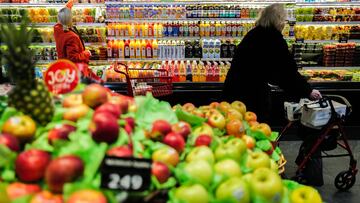Why do food prices continue to rise if inflation is slowing in the US?
In recent months, inflation in the United States has slowed. However, the cost of basic food items remains high. What accounts for such steep prices?

In July 2022, the inflation rate in the United States broke records by exceeding nine percentage points. Since then, the Federal Reserve has adopted an aggressive stance on monetary policy issues, with the goal of bringing down inflation to two percent.
So far, the Central Bank’s measure has borne fruit, as the inflation rate has decreased to three percentage points. However, the prices of basic food items continue to be high. According to a report from CBS, prices in supermarkets are currently 25% more expensive in comparison to figures from January 2020, prior to the covid-19 pandemic.
READ ALSO: Think twice before using a self-service checkout
Why do food prices continue to rise if inflation is slowing in the US?
According to various economists and experts on the subject, the rise in food prices is the result of various factors that go beyond inflation. Among them is the increase in the labor costs of manufacturers and the higher price of cattle.
In addition to this, President Joe Biden has accused companies of deliberately increasing prices. However, some analysts argue that price hikes may actually be due to supply and climate change problems, and not just the desire of companies to implement higher prices. The production of oranges and herds of cattle have been affected by weather phenomena.
READ ALSO: Recall of Rizo Lopez dairy products linked to Listeria outbreak expands
Food items with the greatest increase in the last month
According to the Consumer Price Index for January, the price of food increased by 0.4%, while fast food registered an increase of 5.8%.
The foods that suffered the greatest price increase in the last month were frozen non-carbonated drinks, with an increase of 29% compared to the previous year; beef with a 7.7% higher price tag; and eggs, with prices going up by 3.4%.
On the other end of the scale, the prices of fresh fruit decreased by 1.2% and vegetables by 0.9%.





